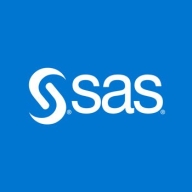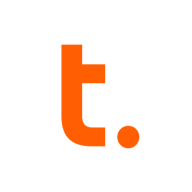

Teradata and SAS Data Management are leading solutions in data processing, integration, and analytics categories. Teradata has a slight edge with superior speed and performance, particularly for large-scale data operations, while SAS is noted for its intuitive data management capabilities.
Features: Teradata offers parallel processing, high scalability, and excellent performance for large-scale data operations. Its adaptable architecture efficiently handles massive workloads and provides strong in-database analytics and workload management. SAS Data Management excels at data integration with robust ETL and data federation functions. It offers a user-friendly environment for data management across different sources, making it accessible for users without extensive technical background.
Room for Improvement: Teradata users suggest improvements in transaction processing and concurrency support and highlight high costs and challenges in cloud integration. It also faces criticism for scaling complexity with big data platforms. SAS is noted for high pricing and limited direct access to non-SAS platforms. Users call for better cloud migration and connectivity alongside improved pricing models.
Ease of Deployment and Customer Service: Teradata supports flexible deployment options across on-premises, cloud, and hybrid environments, praised for scalability and performance, and noted for excellent technical support. SAS, mainly focusing on on-premises deployment, benefits from ease of setup but could enhance cloud integration. Its customer support is adequate but not as extensive as Teradata's.
Pricing and ROI: Teradata's high-quality services come with a steep price, implying suitability for larger enterprises. Despite costs, users report satisfactory ROI due to its handling of extensive analytics workloads and more flexible pricing models enhancing affordability. SAS, similarly priced for its robust features, offers significant value but its pricing is a potential barrier for broader adoption.
The technical support from Teradata is quite advanced.
Customer support is very good, rated eight out of ten under our essential agreement.
This expansion can occur without incurring downtime or taking systems offline.
Scalability is complex as you need to purchase a license and coordinate with Teradata for additional disk space and CPU.
I find the stability to be almost a ten out of ten.
The workload management and software maturity provide a reliable system.
Unlike SQL and Oracle, which have in-built replication capabilities, we don't have similar functionality with Teradata.
Initially, it may seem expensive compared to similar cloud databases, however, it offers significant value in performance, stability, and overall output once in use.
Teradata is much more expensive than SQL, which is well-performed and cheaper.
The data mover is valuable over the last two years as it allows us to achieve data replication to our disaster recovery systems.


Every decision, every business move, every successful customer interaction - they all come down to high-quality, well-integrated data. If you don't have it, you don't win. SAS Data Management is an industry-leading solution built on a data quality platform that helps you improve, integrate and govern your data.
Teradata is a scalable data analytics platform designed to meet enterprise demands for large-scale data management and processing, focusing on performance, scalability, and security for complex query executions.
As a leading data warehousing solution, Teradata integrates advanced analytics enabling organizations to derive insights from massive datasets. It supports high-volume data workloads with its architecture optimized for analytical queries. Users benefit from its robust scalability, allowing seamless expansion as data grows. Teradata's SQL engine is compatible with a wide range of data types, ensuring flexibility in data analysis. With advanced security measures, it protects sensitive data across various environments, providing peace of mind to users handling critical information.
What are the most important features of Teradata?Teradata is widely used in industries like finance, telecommunications, and healthcare, where data-driven decisions are critical. Companies leverage its robust analytics capabilities to enhance customer experiences, streamline operations, and ensure compliance with regulatory requirements. In these sectors, quick access to data insights can significantly impact competitive advantage.
We monitor all Data Integration reviews to prevent fraudulent reviews and keep review quality high. We do not post reviews by company employees or direct competitors. We validate each review for authenticity via cross-reference with LinkedIn, and personal follow-up with the reviewer when necessary.